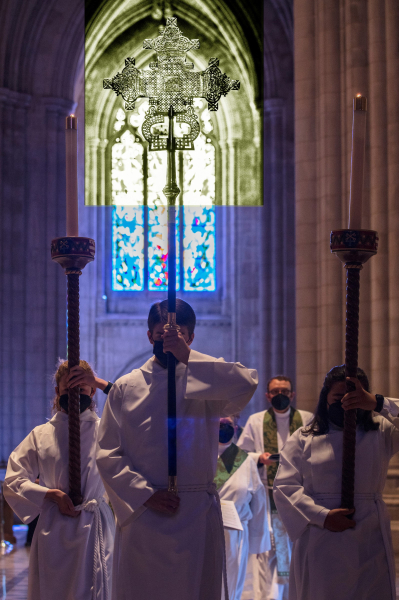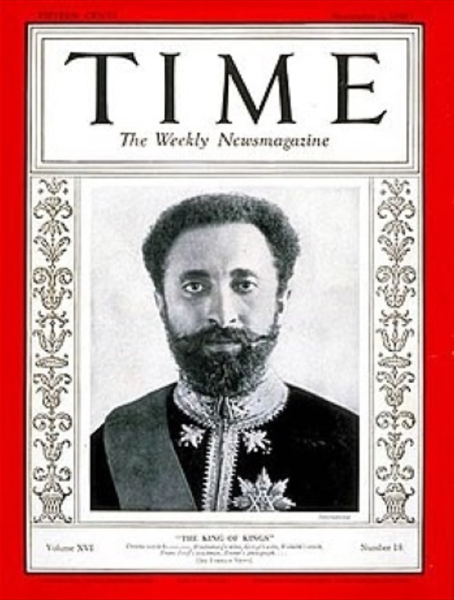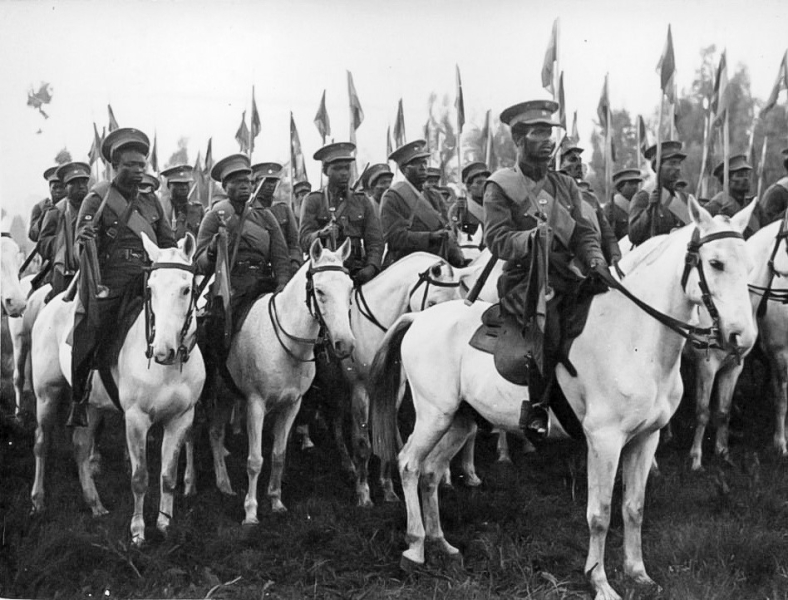Today, when did World-War-Two begin? The University of Houston presents this series about the machines that make our civilization run, and the people whose ingenuity created them.
______________________
Some might say World-War-Two began when Germany invaded Poland. Or maybe a year earlier, when Germany annexed the Sudetenland. Some might even go back to the harsh Versailles treaty. But for me, it began when I was just five.
But I begin with a memory of when I sang with the choir of our Washington National Cathedral. Across from our vesting room was a chapel. One day I looked in and saw a dramatic processional cross. Ethiopian emperor Haile Selassie had given it in thanksgiving.

Haile Selassie Processional Cross, Photo courtesy of Washington National Cathedral
And childhood memories came rushing back. You see, I was the son of a newspaper man. News permeated my childhood. The drumbeat of war first sounded in my home when Mussolini invaded Ethiopia – in 1935. His crazed dream of a new Roman empire! Some of my earliest memories are those newsreels that ran before movies. Ethiopian troops fighting the invaders with their old rifles.
That, of course was just the beginning. Two years later, Japan invaded China. One more year saw Hitler in the Sudetenland. So, my nine-year-old self was hardly surprised when Hitler invaded Poland.
And here enters Emperor Haile Selassie. He was not like so many emperors. He’d fought to gain power. But, then he worked to bring Ethiopia into the new century. He eliminated slavery, introduced a constitution, formed a parliament, created public schools, built roads – set up hospitals.

World war still seemed distant when Selassie stood up to Mussolini. But we might’ve seen it coming. Mussolini was clearly rehearsing. He had modern armament. The Ethiopians had old guns and only light artillery. Some people in remote areas went in armed with – get this – bows and arrows.

Ethiopian Cavalry, 1936 Image courtesy of Wikimedia Commons
They fought with desperation. It was a war they could not win. Hitler meanwhile waited on the sidelines. That war served him well. It drove a wedge between Italy and the western nations.
Mussolini won his lopsided war after seven months. But Ethiopia kept resisting. Along the way, Mussolini had set the stage for the NAZI atrocities still to come. His troops used mustard gas – banned ten years before, by the Geneva Protocol. They rounded up thousands of civilians and gunned them down. They attacked hospitals and ambulances. They shot prisoners.
And they drew the West’s attention. That did indeed drive Italy into the NAZIs’ waiting arms. After this, what we then called “The Axis” was poised to begin its spread across Europe and across the world.
So, you see, we’d already seen the beginning of that terrible time, when I was just five years old – the beginning of a war that finally left eighty or so million dead people in its wake.
I’m John Lienhard, at the University of Houston, where we’re interested in the way inventive minds work.
(Theme music)
S James Dugan, Days of Emperor and Clown: The Italo-Ethiopian War,1935-1936. (1973, Doubleday& Company, Inc.)
Some online sources: Second Italo-Ethiopian War - Wikipedia
Italy Invades Ethiopia 1935 archival footage
One More Scramble in Africa - The Second Italo-Abyssinian War | BETWEEN 2 WARS I 1935 Part 4 of 4
The Italian-Ethiopian Conflict
This episode first aired on July 1, 2025.